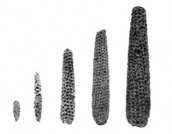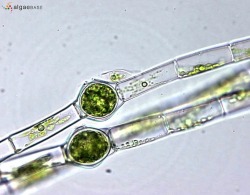I wanted to thank a member from the community who shared the article entitled: "Lipid productivity as a key characteristic for choosing algal species for biodiesel production" by Griffiths and Harrison (2009).
I really like this paper as it reviews several important aspects from strain selection to scale up summarized from the literature. Topics covered:
Microalgae are a promising alternative source of lipid for biodiesel production. One of the most important decisions is the choice of species to use. High lipid productivity is a key desirable characteristic of a species for biodiesel production. This paper reviews information available in the literature on microalgal growth rates, lipid content and lipid productivities for 55 species of microalgae, including 17 Chlorophyta, 11 Bacillariophyta and five Cyanobacteria as well as other taxa. The data available in the literature are far from complete and rigorous comparison across experiments carried out under different conditions is not possible. However, the collated information provides a framework for decision-making and a starting point for further investigation of species selection. Shortcomings in the current dataset are highlighted. The importance of lipid productivity as a selection parameter over lipid content and growth rate individually is demonstrated.
Melinda J. Griffiths and Susan T. L. Harrison. 2009. Journal of Applied Phycology. Volume 21, Number 5, 493-507, DOI: 10.1007/s10811-008-9392-7
I really like this paper as it reviews several important aspects from strain selection to scale up summarized from the literature. Topics covered:
- Desirable characteristics of algae for mass culture
- Changes in algal taxonomy to be aware of when reviewing the literature
- A review of the average laboratory lipid content, biomass and lipid productivity for 55 microalgal species and genera in the literature
- Averages of laboratory lipid content under nutrient-replete and nitrogen-deprived conditions for algae and cyanobacteria
- The average lipid content and biomass productivity for microalgae grown in outdoor ponds and photobioreactors under nutrient-replete conditions
- Doubling times for algae and cyanobacteria
Microalgae are a promising alternative source of lipid for biodiesel production. One of the most important decisions is the choice of species to use. High lipid productivity is a key desirable characteristic of a species for biodiesel production. This paper reviews information available in the literature on microalgal growth rates, lipid content and lipid productivities for 55 species of microalgae, including 17 Chlorophyta, 11 Bacillariophyta and five Cyanobacteria as well as other taxa. The data available in the literature are far from complete and rigorous comparison across experiments carried out under different conditions is not possible. However, the collated information provides a framework for decision-making and a starting point for further investigation of species selection. Shortcomings in the current dataset are highlighted. The importance of lipid productivity as a selection parameter over lipid content and growth rate individually is demonstrated.
Melinda J. Griffiths and Susan T. L. Harrison. 2009. Journal of Applied Phycology. Volume 21, Number 5, 493-507, DOI: 10.1007/s10811-008-9392-7



 RSS Feed
RSS Feed
